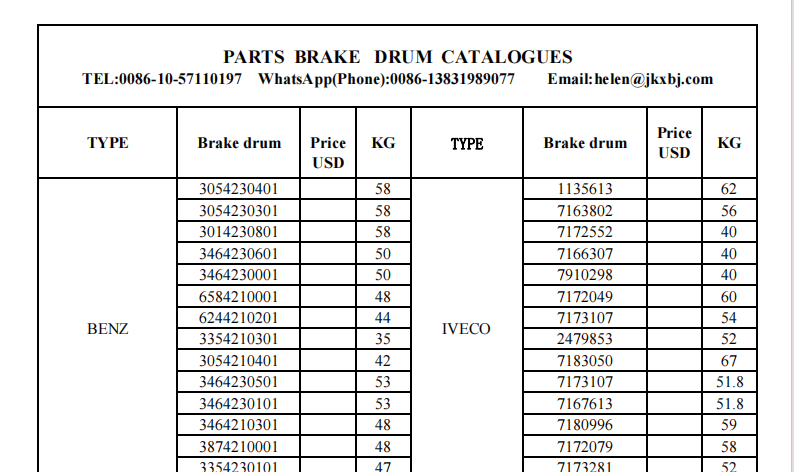Sep . 24, 2024 03:44 Back to list
Innovations in Brake Drum Casting Techniques for Enhanced Performance and Durability
Understanding Brake Drum Casting A Comprehensive Overview
Brake drum casting is a fundamental process in the manufacturing of automotive components, particularly those involved in the braking system of vehicles. Brake drums play a crucial role in ensuring vehicle safety and performance, making the casting technique vital for their production. This article delves into the intricacies of brake drum casting, highlighting its methods, materials, and significance in the automotive industry.
The process of casting involves pouring molten metal into a pre-designed mold, allowing it to solidify into the desired shape. In the case of brake drums, the most commonly used materials are cast iron and certain alloys due to their excellent wear resistance and heat dissipation properties. Cast iron is preferred for its strength, durability, and ability to absorb heat, which is essential during the braking process when friction generates substantial heat.
There are several methods of casting brake drums, including sand casting, shell molding, and die casting. Sand casting is the most prevalent method due to its flexibility and cost-effectiveness. In this method, a pattern of the brake drum is made using sand mixed with a bonding agent, which forms a mold. Once the mold is created, molten metal is poured into it, and after cooling, the mold is removed to reveal the cast brake drum.
brake drum casting

On the other hand, shell molding provides a more precise finish and is useful for large-volume production. This method involves creating a thin shell around a pattern, resulting in a high-quality surface with tighter tolerances. Die casting, although less common for brake drums, allows for faster production rates and complex shapes due to the use of high-pressure molds.
After casting, the brake drums undergo various finishing processes, including machining, to enhance their dimensions and surface quality. It is crucial that brake drums are manufactured to exact specifications to ensure they fit perfectly within the braking system, as any discrepancies can lead to brake failure.
Additionally, quality control is paramount in the production of brake drums. Manufacturers conduct rigorous testing to ensure that the brake drums meet safety and performance standards. This includes checking for structural integrity, dimensional accuracy, and resistance to wear and thermal cycling.
In conclusion, brake drum casting is a critical component of automotive manufacturing, contributing directly to vehicle safety and efficiency. As the automotive industry evolves, advancements in casting techniques and materials continue to enhance the performance of brake drums, paving the way for safer and more reliable vehicles on the road. Understanding this process not only underscores its importance but also highlights the intricate craftsmanship involved in ensuring that our vehicles operate effectively.
-
High-Quality Brake Drum MAZ – Durable Drum Brake Drum & Brake Drum and Brake Shoe Solutions
NewsJul.05,2025
-
High-Quality Brake Drum Iveco - Durable Drum Brake Drum & Brake Shoe Solutions
NewsJul.05,2025
-
High-Quality Brake Drum MAZ – Durable Drum Brake Drum & Brake Drum and Brake Shoe Solutions
NewsJul.04,2025
-
Brake Drum Man - High-Quality Drum Brake Drums & Brake Shoes for Reliable Performance
NewsJun.24,2025
-
High-Quality Brake Drum Kamaz – Durable Drum Brake Drum & Brake Shoe Replacement
NewsJun.10,2025
-
High-Quality Brake Drum Liza for Drum Brake Systems - Superior Durability and Performance
NewsJun.10,2025
